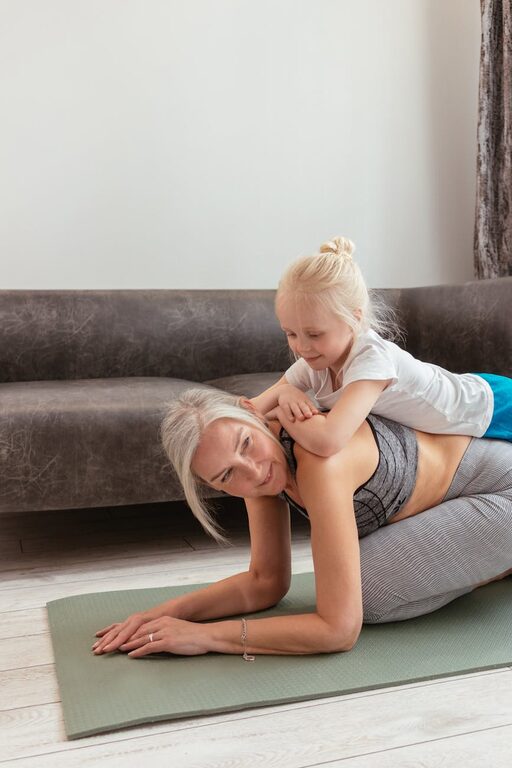Stretching is a simple yet powerful way to enhance your physical health and overall well-being. Whether you want to increase your flexibility, reduce muscle tension, or simply feel more relaxed, introducing stretching into your daily routine can be incredibly beneficial. The best part? You don’t need a gym or any fancy equipment to get started. In this guide, we’ll walk you through everything you need to know about stretching at home, especially if you’re a beginner.
Why Stretch at Home?
Stretching at home offers several advantages:
– Convenience: You can stretch anytime, fitting it into your schedule without travel.
– Cost-effective: No need for gym memberships or special equipment.
– Personal pace: You can go slow, listen to your body, and adjust routines as needed.
– Reduced injury risk: Keeping muscles flexible helps prevent strains and improves posture.
If you’re new to stretching, starting at home allows you to build confidence and create a routine you enjoy.
The Basics of Stretching
Before diving into specific stretches, let’s review some essential principles:
Warm Up First
Stretching cold muscles can cause injury. Spend 5 minutes warming up by walking, gentle jogging in place, or doing some light dynamic movements such as arm circles or knee lifts.
Hold, Don’t Bounce
When stretching, avoid bouncing or jerky movements. Instead, hold the stretch gently for 15–30 seconds to allow your muscles to relax and lengthen.
Breathe Deeply
Focus on deep, steady breaths while stretching. This helps reduce tension and increases oxygen flow to your muscles.
Listen to Your Body
Stretching should never be painful. A mild pulling sensation is normal, but sharp pain is a sign to ease off.
Essential Stretches for Beginners
Here’s a selection of beginner-friendly stretches you can do at home. Aim to perform these 3–4 times per week, or daily if you like.
1. Neck Stretch
– Sit or stand tall.
– Slowly tilt your head to the right, bringing your ear toward your shoulder.
– Hold for 20 seconds, feeling a stretch along the side of your neck.
– Repeat on the left side.
2. Shoulder Stretch
– Bring your right arm across your chest.
– Use your left hand to gently pull the right arm closer to your chest.
– Hold for 20–30 seconds.
– Switch arms.
3. Chest Opener
– Clasp your hands behind your back.
– Straighten your arms and gently lift your chest forward while squeezing your shoulder blades together.
– Hold for 20 seconds.
4. Cat-Cow Stretch (Spine Mobility)
– Position yourself on hands and knees.
– Inhale as you arch your back downwards (cow pose), lifting your head and tailbone.
– Exhale as you round your back upwards (cat pose), tucking your chin and tailbone.
– Repeat 8–10 times, moving with your breath.
5. Hamstring Stretch
– Sit on the floor with one leg extended straight.
– Bend the other leg, placing the sole of that foot against your inner thigh.
– Reach toward the toes of your extended leg, keeping your back straight.
– Hold for 20–30 seconds.
– Switch legs.
6. Quadriceps Stretch
– Stand near a wall or chair for balance.
– Bend your right knee, bringing your heel towards your buttocks.
– Grab your ankle with your right hand.
– Keep knees close and stand tall.
– Hold for 30 seconds.
– Switch legs.
7. Seated Spinal Twist
– Sit on the floor with legs extended.
– Cross your right leg over the left, placing your right foot flat.
– Place your right hand behind you for support.
– Twist your torso to the right, using your left elbow on the outside of your right knee for leverage.
– Hold for 20–30 seconds.
– Switch sides.
8. Child’s Pose
– Kneel on the floor and sit back on your heels.
– Extend your arms forward and lower your forehead to the ground.
– Hold comfortably for 30 seconds or longer.
How to Build Your Stretching Routine
Creating a consistent stretching routine can maximize benefits. Here are some tips:
Set a Schedule
Dedicate a specific time each day or several days a week. Morning or evening sessions work well for many people.
Start Small
Begin with 5–10 minutes and gradually increase as you become more comfortable.
Combine with Other Activities
Stretch after workouts or incorporate it into relaxation routines like yoga or meditation.
Use Props if Needed
A yoga mat, strap, or towel can assist certain stretches, making them easier to perform safely.
Stay Consistent
Flexibility improves over time, so regular practice is key.
Benefits of Regular Stretching
Making stretching a habit supports your body and mind in many ways:
– Improved flexibility and range of motion
– Reduced muscle stiffness and pain
– Better posture and balance
– Enhanced circulation
– Stress relief and relaxation
– Lower risk of injury during physical activity
Common Mistakes to Avoid
To get the most out of your stretching and avoid setbacks:
– Don’t stretch cold muscles—warm up first.
– Avoid bouncing or forcing stretches.
– Don’t hold your breath—keep breathing.
– Don’t ignore pain signals.
– Avoid overstretching; flexibility takes time to build.
Final Thoughts
Stretching at home is an accessible, effective way to improve your overall health and wellness. By starting with simple stretches and practicing regularly, you can enjoy greater flexibility, reduced tension, and a stronger mind-body connection. Remember, the key is to move mindfully and listen to your body.
So find a quiet spot, roll out your mat or find a comfortable floor space, and start stretching today! Your body will thank you.
—
Feel free to leave a comment below sharing your favorite stretches or any questions you have about starting your home stretching routine. Happy stretching!

